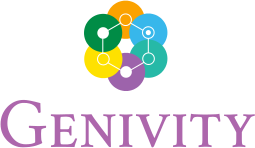Valuations are essential for a company’s growth. It details the current status of your practice, establishes a baseline, and helps identify the progress made in your practice. When it comes to calculating your valuation, quantifiable data such as financial indicators are the first factors to be recognized. It is imperative to recognize that other non-financial factor can also be beneficial to your valuation. Factors like client age, referral rates, and next gen strategies that are already in place are some examples of factors that help maintain your company’s stability and profitability.
In other words, investigating Key Performance Indicators (KPIs) in your practice can allow room for improvements that can drive your valuation higher. As Carla McCabe from Truelytics puts it, “Think of KPIs as a set of gears that are all working together like cogs in a machine…a change in one area of your business can have a profound effect in another.”
However, we acknowledge that it may sound easier than it is. The sustainability of your practice relies heavily on client stability. In other words, if the client is happy, the firm is also happy. With next gen strategies, it now becomes, “If the client and the next generation are happy, then the firm is much more stable and profitable.” That is why we decided to focus on one specific KPI – next gen strategies. That being said, how can advisors connect with the next generations?
Next gen strategies are important to increasing or maintaining clients. If the satisfaction of your current clients remains stable, the next generation will be more likely to become a client, as well. However, you may be asking yourself how that would be manageable. To begin, it’s important that you gain professional opinions on potential next gen strategies. Become as educated as possible regarding these strategies and determine which method would benefit your practice the best.
Your customer service department and marketing team may be useful here. For example, customer satisfaction is a priority. According to LinkedIn, approximately 68% of customers leave services because they believe they do not feel cared for. Surveying your clients to determine their concerns can allow you to improve your practice and prevent future clients from avoiding your services.
When meeting with these teams, consider the following questions: What service am I providing for my clients? How do I encourage engagement from adult children? How do I begin the discussion with clients who are hesitant with this concept? Once you have an idea of your answers, place emphasis on individualization. Clients may respond differently to your approaches. While some may accept incorporating their adult children into their plan, others may have more reservations. Have a Plan B for these types of situations.
However, there are three simple guidelines that can be used to increase the stability of your clients.
Maintain open communication
Communicate with your client frequently. The client is more likely to be satisfied with your practice if they are kept up-to-date with your services, changes in regulations, and changes that occur due to major milestones in their life. This open communication involves acquiring feedback, sending important notices, and recording all communication.
Set clear expectations
Along with communication, make sure to set clear expectations. What are your goals for the day, week, month, or year? What are your client’s goals for this time period? Establish the results of your last interaction and discuss areas of improvement or concerns with your client. Involve your client in your movement, so as to increase the importance of their opinions.
Draw the next generation into the discussion
If your client deems it fit, begin discussions with their adult children. If open communication and expectations have been established, your clients draw in their family members as a resource. However, if the client does not mention this in your discussions, a friendly reminder may also be of assistance. Family members, mainly the client’s adult children, are more likely to bring in new information that your client may have forgotten to mention. Along with this, there will be less miscommunication between the client and their family, which prevents disagreement between your services, your clients, and their families. Reminding your client of this advantage may open them up to this discussion.
The most important takeaway is this – maintain the satisfaction of your current client through simple means such as open communication and transparent expectations. If this is done, your clients become your own advertiser and help to maintain their heirs.
If you are looking for new ways to engage with next-gen heirs, Genivity is here to help. We place emphasis on helping advisors with goal-based financial planning that incorporates health wealth factors to provide personalized reporting. We establish this financial plan alongside the family, which ensures a mutual trust between the client, your practice, and Genivity.

